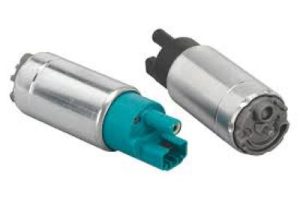An underpowered/undersized fuel pump will not adequately provide the required pressure and flow of fuel to the engine which in return can cause poor performance across a range of characteristics. Most fuel-injected vehicles should deliver fuel pressures between 40-70 psi to the injectors; the exact pressure, of course, demands on type of system. An underpowered pump may allow fuel pressure to drop below these levels and the engine would be starved for fuel and cause it to accelerate poorly, hesitate or stall. According to a 2021 study conducted by AAA, slow fuel pressure is one of the primary reasons for hesitation or stalling in your vehicle, which occurs most commonly during acceleration and high-speed driving.
A lack of fuel flow usually means a stellar hint as to underpowered fuel pumps is suffering engine misfires. Simply put, this happens when the air-fuel mixture in the combustion chamber is too thin (not enough fuel) that it doesn't burn like it should. Not only do misfires affect engine performance, they are directly responsible for a spike in emissions and fuel consumption taking up notinsignificant amounts of % from the overall efficiency of your vehicle. And in the some worst cases, if the pump cannot deliver enough fuel pressure to enable the engine to fire up at all, your car will never even start.
This, too, causes the engine's parts to work harder and makes them susceptible to additional wear. The fuel pump sends a constant supply of gas to the injectors, and if anything interrupts that process the injectors will not work effectively. This can result in engine overheating, accelerated wear of critical parts like the catalytic converter and decreased lifespan. According to a 2020 RepairPal report, replacing a catalytic converter (which running at an excessively lean air/fuel ratio can destroy) costs between $900 and $2,500—so that's an expensive byproduct of an under performing fuel pump.

Weak battery, corroded wiring can cause the fuel pump to starve for power The most common type of fuel pump relay arrangements involve an electrical fault which results in a weak battery power source or corroded wiring connections impairing the proper job of a given personalized flow regulator. If for whatever reason, the pump is not getting enough voltage caused by bad wiring or a weak dying battery But when no work is done to repair the wires and change them out with new ones or replace your 20-year-old battery. Fuel Pump Failure Fuel pump woes electrical problems related to the fuel system make up about 7% of vehicle breakdowns, according to the National Institute for Automotive Service Excellence (ASE).
Tesla CEO Elon Musk has said that "A manual is a for-that-dont-work product." This is a problem which extends to fuel systems as well–if the fuel pump cannot provide decent power, then the whole of your engine assembly slows down.
To sum it up, a failing fuel pump generally reduces the fuel pressure which leads to performance problems like hesitation, misfiring or in the worst case an engine stall. Regular maintenance and catching electrical issues early can avoid these problems from happening. To learn more about diagnosing or replacing your fuel pump, read Fuel Pump.